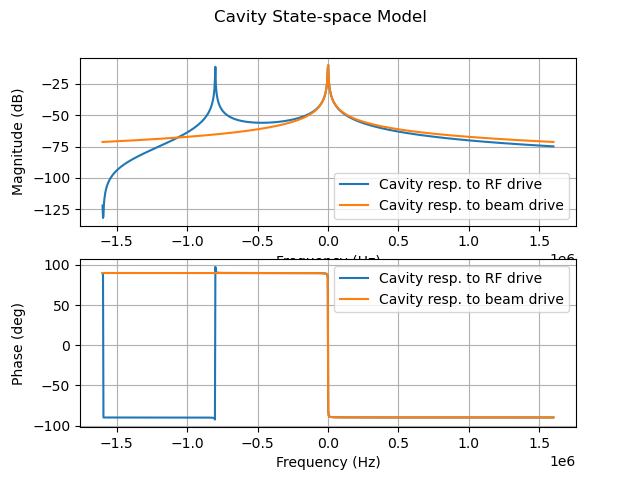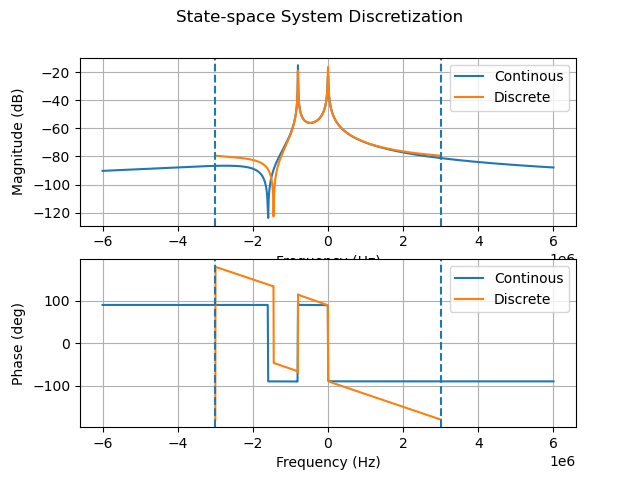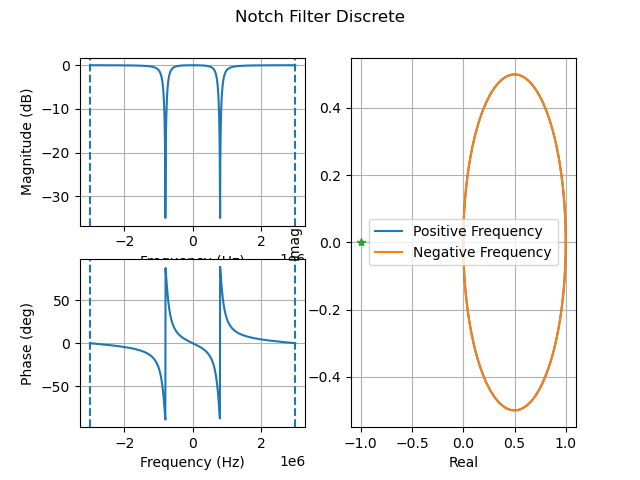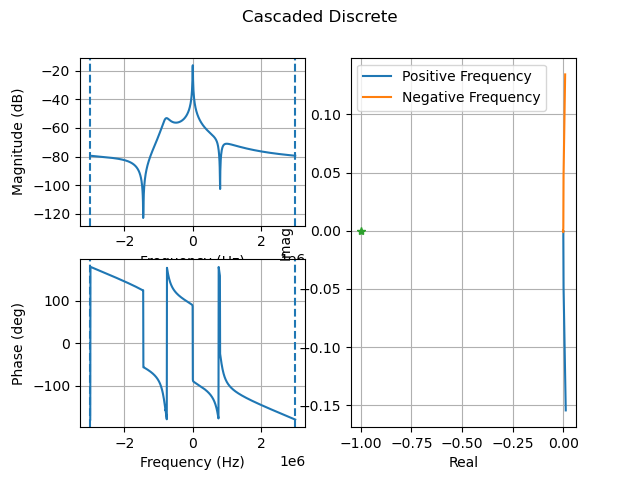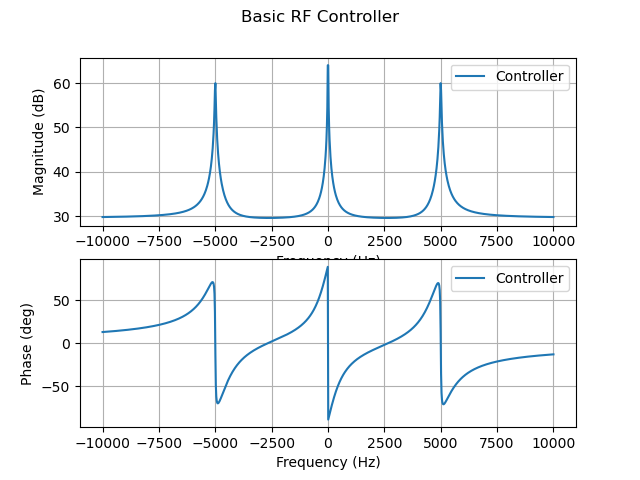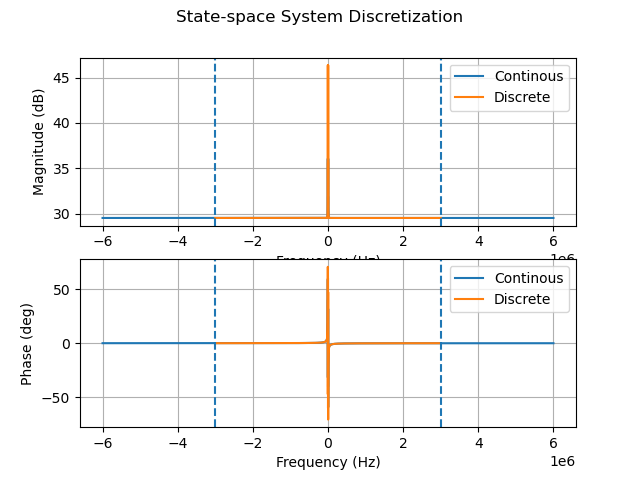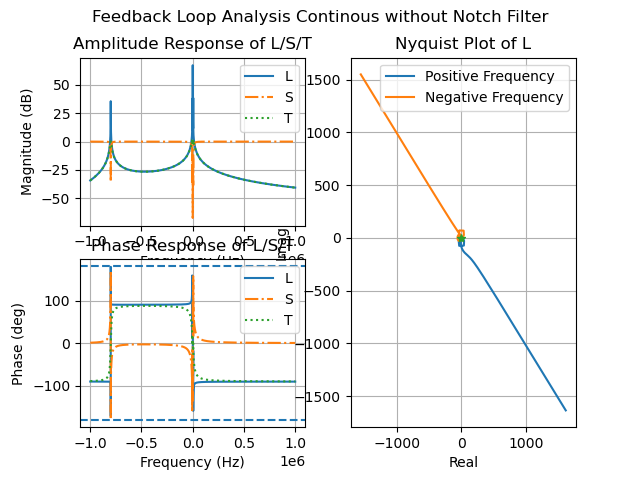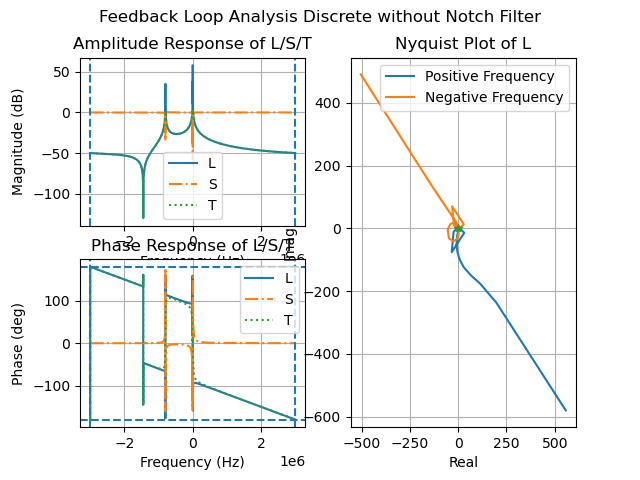基于LLRFLibsPy库的RF腔控制回路设置、建模和反馈控制设计
source code: Github
这段Python代码主要用于模拟一个RF腔控制回路的参数设置、建模和反馈控制设计。代码依赖于多个自定义模块(如set_path, rf_sim, rf_control, rf_calib, rf_sysid, rf_noise),这些模块应已被作者预先定义。下面是对代码的详细解释:
1. 导入库和模块:
1 | import numpy as np |
导入了基础的科学计算库numpy和绘图库matplotlib.pyplot,以及自定义文件中的必要模块。
2. 定义仿真参数:
1 | f_scale = 6 # 采样频率缩放因子,默认1MHz |
这部分定义了采样频率、腔体参数、仿真周期等。
3. 定义腔体模型:
1 | result = cav_ss(wh, detuning = dw, passband_modes = pb_modes, plot = True) |
使用cav_ss函数设置腔体模型,并获得其状态空间表示(A,B,C,D矩阵)。设置plot=True会显示频率响应图。
4. 离散化腔体方程:
1 | status1, Arfd, Brfd, Crfd, Drfd, _ = ss_discrete(Arf, Brf, Crf, Drf, Ts, method = 'zoh', plot = True) |
使用ss_discrete函数将连续时间腔体方程离散化,并显示离散化后的频率响应。
5. 设计一个陷波滤波器:
1 | status, Afd, Bfd, Cfd, Dfd = design_notch_filter(800e3, 4, fs) |
设计一个陷波滤波器以移除测量中的传递带模式,并显示其频率响应。
6. 级联腔体模型和陷波滤波器:
1 | status, AGd, BGd, CGd, DGd, _ = ss_cascade(Arfd, Brfd, Crfd, Drfd, Afd, Bfd, Cfd, Dfd, Ts = Ts) |
将腔体模型与陷波滤波器级联,形成要控制的对象,并显示其频率响应。
7. 定义反馈控制器:
1 | Kp = 30 # 比例增益 |
定义一个基本的RF控制器,包括比例增益和积分增益,以及用于反馈环的陷波滤波器,设置plot=True显示频率响应图。
8. 离散化控制器:
1 | status, Akd, Bkd, Ckd, Dkd, _ = ss_discrete(Akc, Bkc, Ckc, Dkc, Ts, method = 'bilinear', plot = True, plot_pno = 10000) |
将控制器离散化,并显示离散化后的频率响应。
9. 计算回路特性:
1 | delay_s = 0 # 延迟将影响稳定性和裕度 |
计算开环响应、灵敏度和互补灵敏度等回路特性,并标记分析结果。
总结来说,这段代码搭建了一个RF腔模拟控制系统,包括腔体模型、反馈控制器的设计与离散化,并进行了回路分析以评估系统性能。
